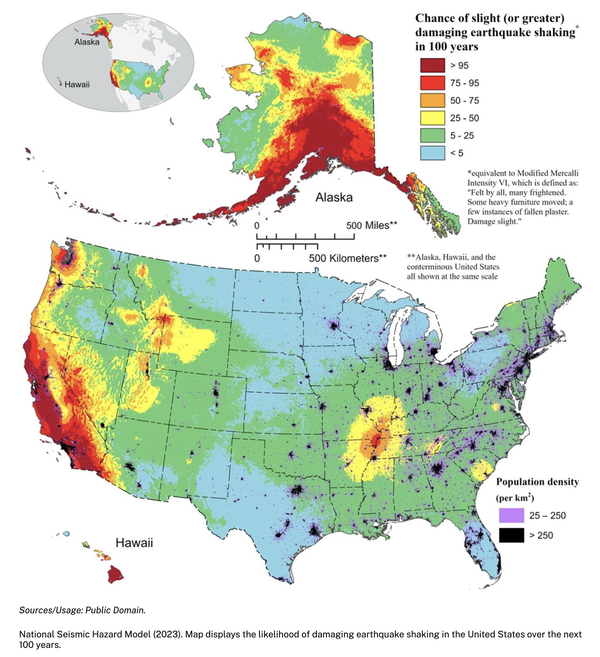An recent update to the national earthquake model by the U.S. Geological Survey (USGS) includes 500 newly discovered faults scattered across the United States, as well as significantly increased seismic risk for major metropolitan cites.
The updated model — called the USGS National Seismic Hazard Model (NSHM) — is the “first comprehensive assessment” of quake risk in all 50 states and reveals that nearly 75% of the country could experience damaging quakes and shaking, a USGS statement said.
Government scientists added the most striking change within the model is the increased chance of more damaging earthquakes along the central and northeastern “Atlantic Coastal corridor” including in the cities of Washington D.C., Philadelphia, New York and Boston.
Additionally, the update increased the chance for significant shaking in “seismically active regions” of California and Alaska and increased Hawaii’s quake risk as a result the recent volcanic eruptions and “seismic unrest” on the islands.

"Earthquakes are difficult to forecast but we’ve made great strides with this new model," said Mark Petersen, USGS geophysicist and the study’s lead author in a statement. "The update includes more faults, better-characterized land surfaces, and computational advancements in modeling that provide the most detailed view ever of the earthquake risks we face."
Key for insurers and risk modelers will be incorporating the new data into their own models and in order to price the risk within their own parameter and time horizon.
“Additional time-dependent studies and consideration of spatial and temporal clustering for earthquakes with very short recurrences (less than about 475 years) would be beneficial,” researchers said. “This improvement would influence risk/ insurance rate models, which are dependent on shorter recurrence earthquakes (less than 500-year recurrence) but are not well defined in the hazard models presented here.”
The last update to the USGS model was in 2018.






